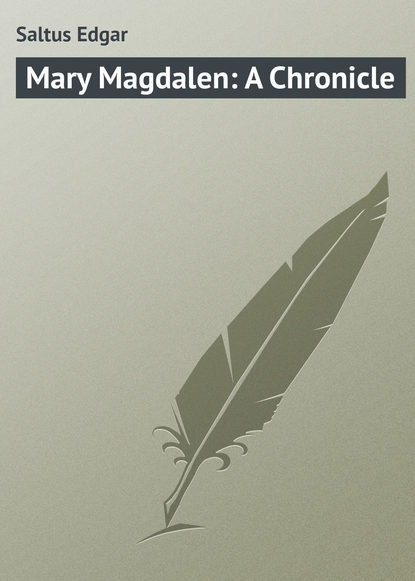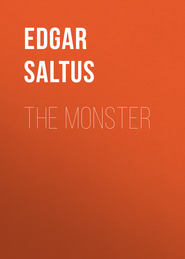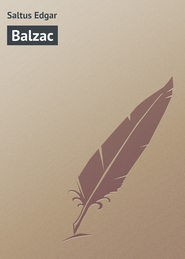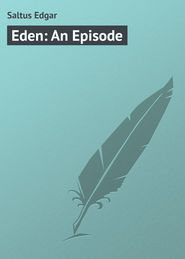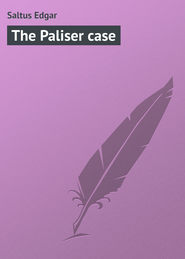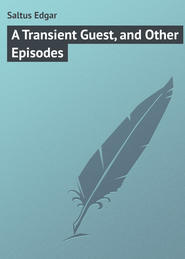По всем вопросам обращайтесь на: info@litportal.ru
(©) 2003-2024.
✖
Mary Magdalen: A Chronicle
Настройки чтения
Размер шрифта
Высота строк
Поля
From the lattice at which she used to sit she could see the wide white road begin its descent to the Jordan, a stretch of almond trees and oleanders; and just beyond, in a woody hollow, a little house in which Sephôrah lived – a woman who came from no one knew where, and to whom Martha had forbidden her to speak.
She could see her still, a gaunt, gray creature, with projecting cheek-bones, a skin of brick, and a low, insinuating voice. The fascination which she had exercised over her partook both of wonder and of fear, for it was rumored that she was a sorceress, and as old as the world. To Mary, who was then barely nubile, and inquisitive as only fanciful children are, she manifested a great affection, enticing her to her dwelling with little cakes that were sweet to the tooth and fabulous tales that stirred the heart: the story of Stratonice and Combabus, for instance, which Mary did not in the least understand, but which seemed to her intensely sad.
“And then what?” she would ask when the tale was done; and the woman would tell her of Ninus and Semiramis, of Sennachereb, of Sardanapalus, Belsarazzur, of Dagon, the fish-god of Philistia, by whom Goliath swore and in whose temple Samson died, or of Sargon, who, placed by his mother in an ark of rushes, was set adrift in the Euphrates, yet, happily discovered by a water-carrier, afterwards became a leader of men.
“Why, that was Moses!” the child would exclaim.
“No, no,” the woman invariably answered,“it was Sargon.”
But that which pleasured Mary more highly even than these tales were the legends of Hither Asia, the wonderlands of Babylon, and particularly the story of the creation, for always the human mind has wished to read the book of God.
“Where did they say the world came from?” she would ask.
And Sephôrah, drawing a long breath, would answer: “Once all was darkness and water. In this chaos lived strange animals, and men with two wings, and others with four wings and two faces. Some had the thighs of goats, some had horns, and some had horses’ feet, or were formed behind like a horse and in front like a man; there were bulls with human faces, and men with the heads of dogs, and other animals of human shape with fins like fishes, and fishes like sirens, and dragons, and creeping things, and serpents, and fierce creatures, the images of which are preserved in the temple of Bel.
“Over all these ruled the great mother, Um Uruk. But Bel, whom your people call Baal, divided the darkness and clove the woman asunder. Of one part he made the earth, and of the other the sun, the moon, the planets. He drew off the water, apportioned it to the land, and prepared and arranged the world. The creatures on it could not endure the light of day and became extinct.
“Now when Bel saw the land fruitful yet uninhabited, he cut off his head and made one of the gods mingle the blood which flowed from it with earth and form therewith men and animals that could endure the sun. Presently Chaldæa was plentifully populated, but the inhabitants lived like animals, without order or rule. Then there appeared to them from the sea a monster of the name of Yan. Its body was that of a fish, but under its head another head was attached, and on its fins were feet, and its voice was that of a man. Its image is still preserved. It came at morning, passed the day, and taught language and science, the harvesting of seeds and of fruits, the rules for the boundaries of land, the mode of building cities and temples, arts and writing and all that pertains to civilized life, and for four hundred and thirty-two thousand years the world went very well.
“Then in a dream Bel revealed to Xisuthrus that there would be a great storm, and men would be destroyed. He bade him bury in Sepharvaim, the city of the sun, all the ancient, mediæval, and modern records, and build a ship and embark in it with his kindred and his nearest friends. He was also to take food and drink into the ship, and pairs of all creatures winged and four-footed.
“Xisuthrus did as he was bidden, and from the ends of heaven the storm began to blow. Bin thundered; Nebo, the Revealer, came forth; Nergal, the Destroyer, overthrew; and Adar, the Sublime, swept in his brightness across the earth. The storm devoured the nations, it lapped the sky, turned the land into an ocean, and destroyed everything that lived. Even the gods were afraid. They sought refuge in the heaven of Anu, sovereign of the upper realms. As hounds draw in their tails, they seated themselves on their thrones, and to them Mylitta, the great goddess, spake: ‘The world has turned from me, and ruin I have proclaimed.’She wept, and the gods on their thrones wept with her.
“On the seventh day Xisuthrus perceived that the storm had abated and that the sea had begun to fall. He sent out a dove, it returned; next, a swallow, which also returned, but with mud on its feet; and again, a raven, which saw the corpses in the water and ate them, and returned no more. Then the boat was stayed and settled upon Mount Nasir. Xisuthrus went out and worshipped the recovered earth. When his companions went in search of him he had disappeared, but his voice called to them saying that for his piety he had been carried away; that he was dwelling among the gods; and that they were to return to Sepharvaim and dig up the books and give them to mankind. Which they did, and erected many cities and temples, and rebuilt Babylon and Mylitta’s shrine.”
“It is simpler in Genesis,” Mary said, the first time she heard this marvellous tale. For to her, as to Martha and Eleazer, the khazzan, the teacher of the synagogue, had read from the great square letters in which the Pentateuch was written another account of the commingling of Chaos and of Light.
At the mention of the sacred canon, Sephôrah would smile with that indul gence which wisdom brings, and smooth her scanty plaits, and draw the back of her hand across her mouth.
“Burned on tiles in the land of the magi are the records of a million years. In the unpolluted tombs of Osorapi the history of life and of time is written on the cerements of kings. Where the bells ring at the neck of the camels of Iran is a stretch of columns on which are inscribed the words of those that lived in Paradise. On a wall of the temple of Bel are the chronicles of creation; in the palace of Assurbanipal, the narrative of the flood. It is from these lands and monuments the Thorah comes; its verses are made of their memories; it gathered whatever it found, and overlooked the essential, immortal life.”
And Sephôrah added in a whisper,“For we are descended from gods, and immortal as they.”
The khazzan had disclosed to Mary no such prospect as that. To him as to all orthodox expounders of the Law man was essentially evanescent; he lived his little day and disappeared forever. God alone was immortal, and an immortal being would be God. The contrary beliefs of the Egyptians and the Aryans were to them abominations, and the spiritualistic doctrine inaugurated by Juda Maccabæus and accepted by the Pharisees, an impiety. The Pentateuch had not a word on the subject. Moses had expressly declared that secret things belong to the Lord, and only visible things to man. The prophets had indeed foretold a terrestrial immortality, but that immortality was the immortality of a nation; and the realization of their prophecy the entire people awaited. Apart from that there was only Sheol, a sombre region of the under-earth, to which the dead descended, and there remained without consciousness, abandoned by God.
“Immortal!” Mary, with great wondering eyes, would echo. “Immortal!”
“Yes; but to become so,” Sephôrah replied, “you must worship at another shrine.”
“Where is it?”
Sephôrah answered evasively. Mary would find it in time – when the spring came, perhaps; and meanwhile she had a word or two to say of Baal to such effect even that Mary questioned the khazzan.
“However great the god of the Gentiles has been imagined,” the khazzan announced, “he is bounded by the earth and the sky. His feet may touch the one, his head the other, but of nature he is a part, and, to the Eternal, nature is not even a garment, it is a substance He made, and which He can remould at will. It is not in nature, it is in light, He is: in the burning bush in which He revealed Himself; in the stake at which Isaac would have died; in the lightning in which the Law was declared, the column of fire, the flame of the sacrifices, and the gleaming throne in which Isaiah saw Him sit – it is there that He is, and His shadow is the sun.”
Of this Mary repeated the substance to her friend, and Sephôrah mused.
“No,” she said at last – “no, he is not in light, but in the desert where nature is absent, and where the world has ceased to be. The threats of a land that never smiled are reflected in his face. The sight of him is death. No, Baal is the sun-god. His eyes fecundate.”
And during the succeeding months Sephôrah entertained Mary with Assyrian annals and Egyptian lore. She told her more of Baal, whose temple was in Babylon, and of Baaltis, who reigned at Ascalon. She told her of the women who wept for Tammuz, and explained the reason of their tears. She told her of the union of Ptah, the unbegotten begetter of the first beginning, and of Neith, mother of the sun; of the holy incest of Isis and Osiris; and of Luz, called by the patriarchs Bethel, the House of God, the foothold of a straight stairway which messengers ceaselessly ascended and descended, and at whose summit the Elohim sat.
She told her of these things, of others as well; and now and then in the telling of them a fat little man with beady eyes would wander in, the smell of garlic about him, and stare at Mary’s lips. His name was Pappus; by Sephôrah he was treated with great respect, and Mary learned that he was rich and knew that Sephôrah was poor.





